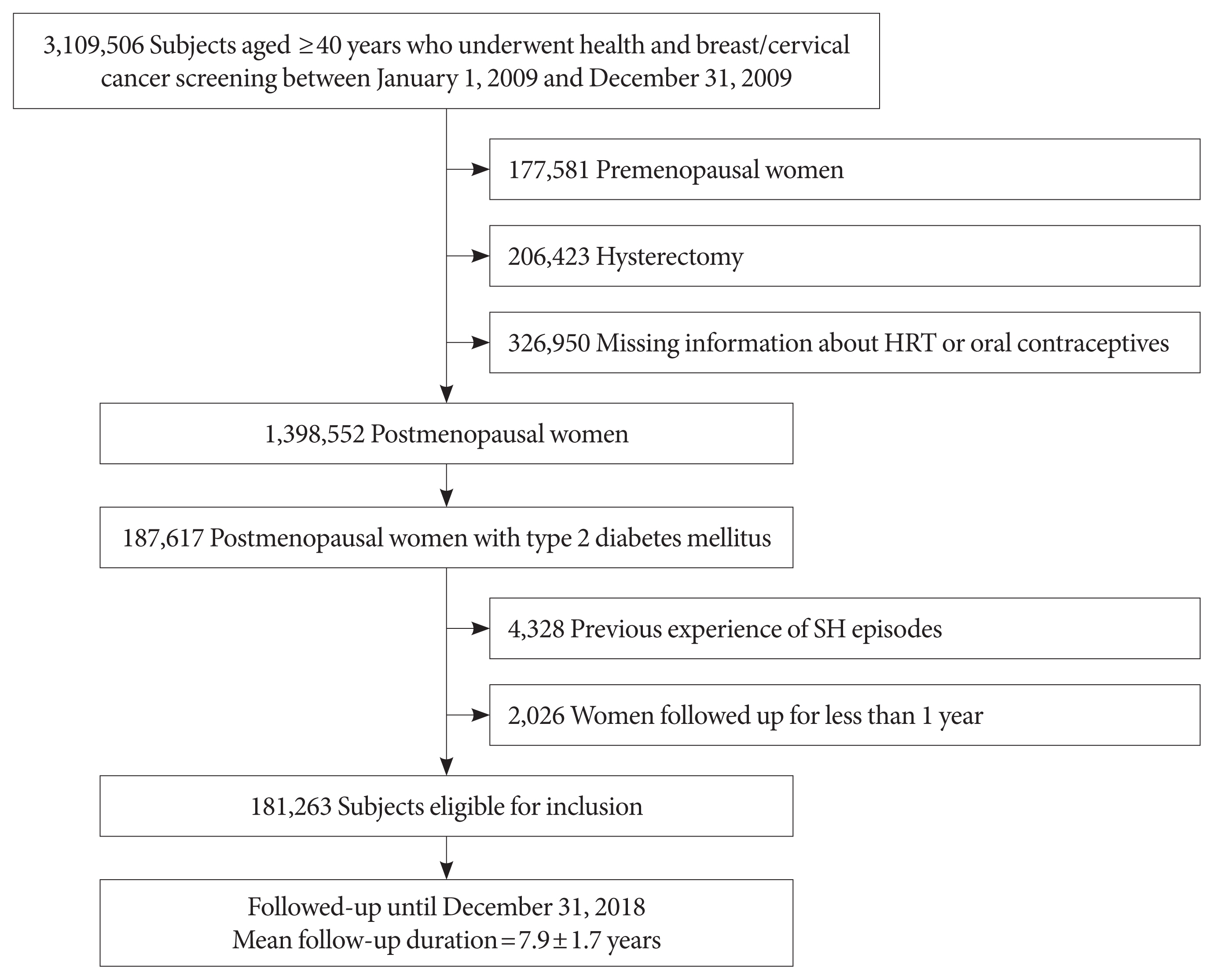
- Current
- Browse
- Collections
-
For contributors
- For Authors
- Instructions to authors
- Article processing charge
- e-submission
- For Reviewers
- Instructions for reviewers
- How to become a reviewer
- Best reviewers
- For Readers
- Readership
- Subscription
- Permission guidelines
- About
- Editorial policy
Search
- Page Path
- HOME > Search
Original Article
- Metabolic Risk/Epidemiology
- Reproductive Life Span and Severe Hypoglycemia Risk in Postmenopausal Women with Type 2 Diabetes Mellitus
- Soyeon Kang, Yong-Moon Park, Dong Jin Kwon, Youn-Jee Chung, Jeong Namkung, Kyungdo Han, Seung-Hyun Ko
- Diabetes Metab J. 2022;46(4):578-591. Published online January 24, 2022
- DOI: https://doi.org/10.4093/dmj.2021.0135

- 5,969 View
- 230 Download
- 3 Web of Science
- 3 Crossref
-
 Abstract
Abstract
 PDF
PDF Supplementary Material
Supplementary Material PubReader
PubReader  ePub
ePub - Background
Estrogen promotes glucose homeostasis, enhances insulin sensitivity, and maintains counterregulatory responses in recurrent hypoglycemia in women of reproductive age. Postmenopausal women with type 2 diabetes mellitus (T2DM) might be more vulnerable to severe hypoglycemia (SH) events. However, the relationship between reproductive factors and SH occurrence in T2DM remains unelucidated.
Methods
This study included data on 181,263 women with postmenopausal T2DM who participated in a national health screening program from January 1 to December 31, 2009, obtained using the Korean National Health Insurance System database. Outcome data were obtained until December 31, 2018. Associations between reproductive factors and SH incidence were assessed using Cox proportional hazards models.
Results
During the mean follow-up of 7.9 years, 11,279 (6.22%) postmenopausal women with T2DM experienced SH episodes. A longer reproductive life span (RLS) (≥40 years) was associated with a lower SH risk compared to a shorter RLS (<30 years) (adjusted hazard ratio [HR], 0.74; 95% confidence interval [CI], 0.69 to 0.80; P for trend <0.001) after multivariable adjustment. SH risk decreased with every 5-year increment of RLS (with <30 years as a reference [adjusted HR, 0.91; 95% CI, 0.86 to 0.95; P=0.0001 for 30−34 years], [adjusted HR, 0.80; 95% CI, 0.76 to 0.84; P<0.001 for 35−39 years], [adjusted HR, 0.74; 95% CI, 0.68 to 0.81; P<0.001 for ≥40 years]). The use of hormone replacement therapy (HRT) was associated with a lower SH risk than HRT nonuse.
Conclusion
Extended exposure to endogenous ovarian hormone during lifetime may decrease the number of SH events in women with T2DM after menopause. -
Citations
Citations to this article as recorded by- Association between serum copper level and reproductive health of Women in the United States: a cross-sectional study
Yi Yuan, Tong-Yu Peng, Guang-Yuan Yu, Zhao Zou, Meng-Ze Wu, Ruofei Zhu, Shuang Wu, Zi Lv, Su-Xin Luo
International Journal of Environmental Health Research.2023; : 1. CrossRef - Reproductive Lifespan and Motor Progression of Parkinson’s Disease
Ruwei Ou, Qianqian Wei, Yanbing Hou, Lingyu Zhang, Kuncheng Liu, Junyu Lin, Tianmi Yang, Jing Yang, Zheng Jiang, Wei Song, Bei Cao, Huifang Shang
Journal of Clinical Medicine.2022; 11(20): 6163. CrossRef - Menopause and development of Alzheimer’s disease: Roles of neural glucose metabolism and Wnt signaling
Paulina Villaseca, Pedro Cisternas, Nibaldo C. Inestrosa
Frontiers in Endocrinology.2022;[Epub] CrossRef
- Association between serum copper level and reproductive health of Women in the United States: a cross-sectional study

 KDA
KDA
 First
First Prev
Prev





